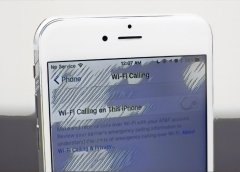
How much are you paying for your mobile bill every month?
£15? £35? £75?
According to coverage by RSA Oracle on recent Ofcom findings, the average UK household spends £46 per month on mobile service.
That's a lot of money!
Especially when you add on the mobiles of family members.
The good news?
According to Ofcom, while prices are remaining fairly stable, the allotments offered with tariffs seem to be getting more generous over time.
So while you might not pay much less if you switch, there's a good chance you can enjoy your phone more.
Even then, if you can trim £5 off your bill, you're looking at savings of £60 per year, per line.
For a family of four, that's £240 -- a sum that's hard to overlook. And, if you're on an older plan, there's a good chance you'll see healthy increases to plan features along with your savings.
But how do you make the switch?
While it might seem like a daunting task, it's pretty simple as long as you know the pitfalls to avoid.
In this guide, we'll cover everything you need to know to avoid any nasty surprises...
Some Reasons to Consider Switching
Unless you want a fresh start with a new phone and a new number, switching will take some time and effort.
There's the possibility of fees due to contracts or device financing, delays to bring over your number, and time required to research and find the best deals.
It's not something you want to charge into blindly. You've got to have a good reason to go through the effort.
Here's a few reasons to switch:
Your Existing Service is Too Expensive
Cost is one of the biggest reasons people look to switch mobile providers.
New prepaid options and smaller networks are making big changes in the mobile market—especially if you're often within range of an open Wi-Fi network or don't use your phone heavily.
Options like giffgaff and 1p Mobile offer excellent alternatives to the major networks.
If you're paying the £46 average or more for your phones, the savings from these alternative networks will pile up fast.
Poor Coverage or Other Service Issues
While saving on your monthly mobile bill is alluring, many people switch due to service issues.
Things like slow mobile data speeds, poor coverage, bad call quality, or frustrating customer service.
If you feel that your network no longer offers the same value or service they offered at the start of your contract, it may pay to shop around.
Unbeatable Promotions Elsewhere
Monthly plans, mobile selection, and coverage look similar for most networks these days.
As such, promotions are one of the few remaining ways that networks can stand out from the crowd.
If you see a deal that is too good to resist from another network, it might be time to make the switch from your current provider.
Especially considering that most promotions are only available for a few weeks or months.
But read all terms and conditions before signing up. Most promotions require two-year contracts or purchasing mobiles before you qualify.
Should you find that service isn't what you expected, you might be left dealing with a new set of problems.
Better Bonus Perks Elsewhere
Many service providers include a few perks with your monthly contract.
Common options include:
- Discounts on event tickets
- Free Wi-Fi hotspot access
- Free subscriptions to streaming services
- Free in-network calling
- Mobile upgrade deals
If the perks are something you'll use often, it's a simple way to add value to your mobile plan and make life a little more enjoyable.
Plans that include free media streaming are especially popular as you can cancel your existing subscription to a service offered as a perk and save even more after switching -- just remember, free accounts doesn't always mean free data to go with it.
Also, while they market these perks as free, there's a good chance you're paying something toward them each month through a hidden increase in your tariff.
So if you don't use the perks with your existing network (or you don't use the perks on the network you switch to) you're probably wasting money.
Better Roaming Support
Roaming is one of the few areas in which billing can differ drastically between networks -- at least on roaming outside the EU.
If you're a frequent traveler, switching to a network with affordable and flexible roaming features can both eliminate the hassle of swapping out SIMs everywhere you go and save you some serious money.
Better Mobile Model Options
Although the number of network-exclusive phones seems to dwindle as new generations are released, some networks still get big releases before others.
If you can't wait for the latest new mobile or you're eyeing a specific color or variant, switching networks might be a way to get that shiny new upgrade you've been eyeing.
You Can Save By Bundling Services Elsewhere
While it wasn't always the case, these days, most mobile service providers can also be your internet or cable provider.
In most cases, having all three services with the same provider will translate to savings on each service. Sometimes, this is enough to switch.
Just be sure to check any fine print on bundle deals to see what costs will be after the promotion expires or you might find yourself in for a real shock in 12 months.
Life Happens
If there's one thing you can count on in life, it's the unexpected.
Major life events, such as moving, getting married, or the kids growing up, are great times to step back and assess your various monthly expenses --including your mobile bills.
Preparing to Make the Switch
Regardless of your reason for switching, the best way to set yourself up for savings and success is to do a bit of research first.
This will ensure that you have the information you need and avoid surprises during the switching process.
Step 1: Check your contract status
If you're using a prepaid mobile, there's a good chance you have little to worry about here.
However, if you're paying monthly and still on a contract, leaving early likely means dealing with early termination fees. These can add hundreds of pounds to the costs of switching.
If you've met the terms of your contract, there's a good chance you can leave for a new provider with little worry of additional fees.
However, if you also leased or financed your phone, be sure to check any terms there too. Some carriers finance phones through a third-party lender.
If so, you can probably continue to make payments on your mobiles. If you were financed through your network, you must probably pay any remaining balances before leaving—some even automatically draft it from your account!
RELATED GUIDE: How to Get Out of Your Phone Contract
Step 2: Determine if you want to keep your mobile
If you plan on getting a new mobile with your new network, you're already done with step two.
However, if you plan to bring it with you, you must check a couple things: Is your mobile locked?
If so, you'll need to contact your network or a third-party provider to unlock your mobile.
The process is quick—and most times free—but your mobile may not work on a new carrier without unlocking it first.
But, unlocking is only half of the picture... don't forget to check which network frequencies your mobile supports too.
The simplest way to check is to enter your mobile model in WillMyPhoneWork or Frequency Check.
Step 3: Backup your important data
If you have a smartphone, there's a good chance that most of your important data—be it pictures, videos of the kids, contacts, or emails—are all stored in the cloud somewhere.
Both Android and Apple provide features that do so both natively and within some of the most popular apps.
However, it's better to double-check and be sure you've got everything to be safe.
If you're looking to automate the backup process, our best Android backup app round-up provides dependable options. Looking for an iPhone solution? Your best bet is a solid iTunes backup—just connect and let it run.
NOTE: If your data is super critical—such as work documents or the like—you might reload your backup after making it to be sure it works. Of course, this risks losing data on your mobile if the backup wasn't successful. However, it's better to know you might have a problem before switching as your network might have ways to help you sort things out.
Step 4: Decide if you want to keep your number
Keeping your number is easy, but recovering your number after it is lost is next to impossible.
Be sure to decide in advance and mention it to your new network at the start of signing up for service to avoid any complications.
In most cases, keeping your number is free and only adds a brief delay to getting started with your new service provider.
Keep in mind that changing your number once you've started service is often a paid feature.
So if you've considered changing your number in the past due to excessive nuisance calls or wanting a fresh start, now is the time to time to consider what you'd really like to do.
Step 5: Check network coverage in your area
Unless you're on Wi-Fi all the time, your phone experience will only be as good as your coverage.
But network coverage maps are only an estimation of what you'll get.
Everything from the thickness of the walls in your home to the model of mobile you use can impact coverage.
That doesn't mean you shouldn't check the network's coverage map. While they won't be perfectly accurate, they will at least give you a basic idea of what coverage is like in your area.
We have the links to coverage maps for every network to save you the hassle of digging through different sites.
So how can you find out more about coverage without signing up for service?
You have a couple options available:
- Talk to friends and family
If you know someone who uses the network you plan to use, ask them how they like their service and if they have coverage in areas you visit often. Better yet, see if they'd let you borrow their mobile for few hours or want to hang out. Then you can see how coverage looks for yourself. - Check a crowd-sourced coverage site
The next best thing to information that you source yourself is crowd-sourced sites that compile coverage data from other people's mobiles. Both RootMetrics and OpenSignal provide maps with far greater detail than network coverage maps. You can even find advanced metrics, such as average transfer speeds, depending on how you plan to use your mobile.
Step 6: Check Your Billing Cycle
Lastly, before you commit to anything, be sure to check your billing cycle dates.
While some networks will prorate your bill based on when you cancel service, others cut off your line and keep the remaining money.
For the best savings, we recommend starting the switch around 4 days before your payment is due.
Start the switch around 4 days before your payment is due
This gives plenty of time for the number porting process to complete if you're switching your number while minimizing any losses should your old network not credit you for unused time.
Shopping Around for the Best Deal
With the information about your existing plan gathered, it's time to look into your options for switching.
As there's no perfect plan for everyone—and promotions change often—we won't list exact details here.
But by keeping these considerations in mind, you can be sure that you've covered the important aspects of choosing a new tariff and provider.
Step 1: Determine Your Needs
There are two aspects to determining the best fit: what mobiles you'll need and what you're looking for in a plan.
If it appears you'll need a new mobiles—or you're looking to upgrade your gear when you switch—be sure to check network phone deals to see if your desired mobile is available.
Can't find the mobile you're looking for?
You can also check third-party sites such as Amazon or head to the local high street electronics store or mobile shop.
Just be sure to check that the mobiles you're looking at are compatible with the new service you intend to use.
With the mobile decision made, it's time to move on to tariffs.
The most straight-forward option for assessing tariff needs is to dig up your last two or three mobile bills from your existing network.
Check your average usage for minutes, messages, and data.
If you use any of your account perks, be sure to note those as well and see how losing them might impact how you use your mobile.
Knowing how you use your mobile and what perks offer value to you, you'll have a good baseline estimate of what you need in a new tariff.
From there, you can compare tariffs and match your needs to the prices of each service provider and see who is offers the best value.
Step 2: Choosing Between PAYG, Monthly, or SIM-Only Plans
Even a few years ago, choosing PAYG service for a phone you plan to use regularly was cringe-worthy.
Prices didn't compete with monthly tariffs if you had a good enough credit score to get one.
These days, with the rise in PAYG bundles, PAYG deals compete with monthly tariffs in terms of value and features.
One of the biggest differences remaining between the two is mobile selection.
If you're looking for financing on a high-end mobile or a nice discount on your device, you're likely stuck with a monthly tariff and contract.
If you've bought your mobile upfront, or don't mind a cheaper model, then PAYG can offer the same service with less hassle—and legal obligations.
Many monthly tariffs are also available as SIM-only deals.
These deals ditch the mobile financing fees and contract requirements while offering lower rates than standard tariff if you bring your own mobile.
For many, this is the best balance of cost and convenience.
There is no need to worry about topping off your account or tracking balances and you'll get full access to features while still using your favorite mobile.
In many ways, it is like blending the perks of both monthly and PAYG services.
Not sure where to start?
We've already compared some of the best PAYG plans and monthly tariffs on the market to give you a head start.
Still don't see something you like?
Our tariff comparison tool makes it easy to choose the features you need and get an easy-to-compare list of options from leading networks.
Step 3: Check for Sign-On Bonuses or Switching Incentives
Many networks offer nice deals for people signing up for service—especially if they're coming from one of their major competitors.
Common promotions include:
- Paying any early termination fees you might have
- Free mobiles
- Doubled data allotments
- Discounts for the first 6 to 12 months of service
- Prepaid gift cards
But before you get excited about free stuff, be sure to check the fine print and compare it to other deals available elsewhere.
For example, while some networks will pay your early termination fees, this is often done using a prepaid gift card.
And to claim your card, you must first pay the fee out of your own pocket and then submit the bill to your new network for reimbursement.
If you have multiple lines or a newer contract, this could mean fronting hundreds of pounds for four to six weeks while you wait for the card to arrive.
For discounts on the certain number of months, be sure to confirm the rates after the promotion is over.
Last thing you want is to save a little upfront to spend more later when you're locked into a contract.
Also, when looking at mobile discounts, check whether the mobile is new or refurbished.
While refurbished mobiles aren't necessarily bad, they come with their own trade offs and concerns.
Finally, free mobiles are never free.
Free mobile promotions almost always require a contract commitment, purchasing a certain tariff, or buying other mobiles at full price to get the free ones.
While they might look great upfront, they almost always limit your options regarding billing or switching again soon.
Step 4: Consider One-Time Fees
While many promotions want to make it seem like you'll pay exactly what's listed on the site there is almost always some added fees when you sign up.
These include:
- Applicable taxes on any mobiles
- Activation fees
- SIM card fees
These all vary both in cost and how they're applied.
Activation fees may be per line or per account.
SIM card fees are almost always per device.
By the time everything adds up, your initial cost could be £100+ more than what you see on the promotion page.
So plan for this and allow a little wiggle room in your budget.
The Main Event: Making the Switch
At this point, you should know which network and plan you want as well as any mobiles or features you might need.
From here, it's a matter of getting in touch with the network you plan to use to establish service or stopping by your nearest network location.
Before you do so, you'll want to organize the information needed for the switch.
While exact requirements vary, you'll likely need:
Identifying information—such as a government-issued ID card or driver's license
Proof of address—such as a bill from one of your utility providers or credit cards
A copy of your bill from your current provider
A way to pay any costs associated with your new service
If you want to keep your number, you'll need to get a PAC code from your existing network and provide it to your new one.
Until July 2019, this required calling in and going through a process some found confusing and cumbersome.
However, it's now as simple as firing off a text message.
Want to keep your number? Text "PAC" to 65075
Want a new number? Text "STAC" to 75075
You can also text "INFO" to 85075 for additional information
With your PAC code, you can authorize your new network to start the process of bringing your number over.
WARNING: DO NOT CANCEL your old service before switching if you plan to keep your number. The line must be active to port the number between providers. If you cancel your old service prior to completing the number porting process, you cannot get the number back. Once the number is ported, the old account should automatically close.
With your information gathered, get in touch with the new service provider, pick your tariffs and mobiles, and let them know if you want to keep your number.
If you do this in a shop, you'll likely get a SIM for your new service immediately.
Switching online or over the phone?
You'll probably need to wait a few days for a SIM to arrive in the mail. However, you can often combine both methods by calling or chatting in to switch and then popping by a nearby network location to pick up your SIM.
Once you have your SIM, insert it into your mobile and follow any activation instructions listed.
In most cases, this includes calling customer service to confirm the SIM arrived and adjusting any settings on your mobile the network requires.
If you're switching to a PAYG provider, you also must ensure that there is credit on the account before you can use your new service.
Once you're up and running, be sure to check in with your old provider to tie up any loose ends, such as early termination fees or device financing agreements.
If your switch involved upgrading mobiles or purchasing a new one, be sure to restore your backup and head to the nearest secure Wi-Fi connection to update your apps and get things back to how you like them.
Congratulations!
You've made the switch and are on your way to saving more money on your mobile service!
Common questions
Q. How long does it take for my number to switch networks?
Local regulations differ as to the maximum time it can take. But in most cases, the process takes anywhere from a couple hours to a couple days. Be careful with weekends though as they might add delays.
Q. Will I lose service while my number is switching from one network to another?
If you are expecting important calls during the switch, be sure to make people aware that you're swapping networks.
You can also set up a service such as Google Voice or Skype to help route calls until things are finalized.
You'll most likely be able to make calls while the number switch is in progress. However, calls coming in will be routed to your new line of service once the switch is made.
The best way to tell when the process is complete is to keep an eye on your service through your old provider. If it suddenly stops working, it's probably time to pop in your new SIM.
Q. Can you keep your mobile?
This depends on the network you're switching to. Some networks use different frequencies and some phones only support certain frequencies. You need to first check if your phone is compatible.
Then there's the problem of locked mobiles.
If it's unlocked and supports the frequencies of your new network, you should be good to go.
If not, our mobile reviews can help you find a perfect replacement for your budget and intended usage. We also have a guide on mobile unlocking that might open up additional options.
But don't just toss your old mobile in a drawer and forget about it. You might be able to sell your used mobile or trade it in with your new network and offset the cost of switching.
Q. Do I have to notify my current network I am switching?
If you're keeping your old number, you'll need a PAC code from your existing network to initiate the transfer. Once the number transfers, your old account should automatically close.
If you're getting a new number, you'll need to get in touch to close out your old account and handle any remaining fees or balances once you're all signed up and ready to go.
Q. What about fees? Are there any ways to avoid them?
The most common fee encountered when switching networks is an Early Termination Fee.
As these apply to each line you plan to switch, they can add up shockingly fast.
Fortunately, if you're wondering how to switch phone carriers without paying, there are a few things you can try to avoid paying the ETF.
If those don't work, and you own a flagship mobile, you might be able to sell your used mobile to recoup a portion of the fees.
Then, you can further offset costs by picking up a mobile at a discount with your new network.
Q. Will my voicemails transfer too? What about other features, such as call forwarding?
No. Unless you're using a third-party voicemail service, you won't be able to retrieve past voicemails.
If you had call forwarding set up, you'll likely need to configure that again too.
Summary
Planning is the best way to avoid any pitfalls and streamline the switching process
Always backup your data before switching mobiles
Check coverage to limit options
Be sure to consider whether you need or want a new mobile
If so, be sure to research compatibility before limiting options further
Shop around to find the best deal—promotions change often
Read the promotional fine print
Don't forget about added fees
If you're bringing your number with you, beware of possible downtime
Check in with your old network after the switch to ensure there are no financial surprises
While switching networks might seem like a daunting process, with the right approach, it can be painless and even result in some savings.








